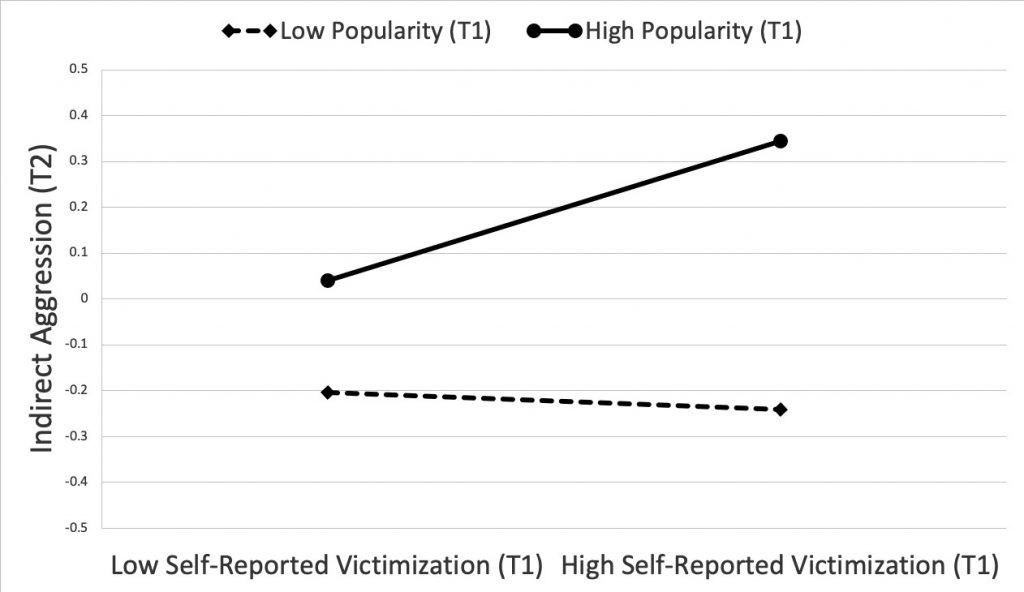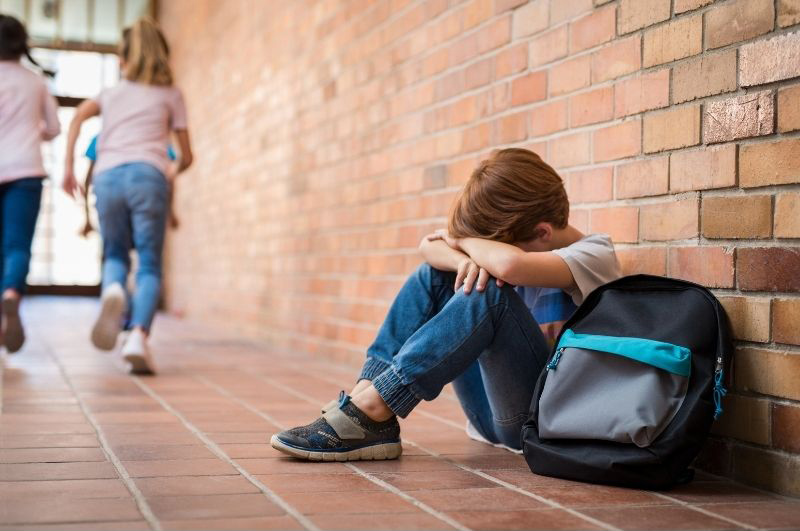Sarah Malamut
INVEST blog 14/2020
Peer victimization – being targeted with aggression by one’s peers – is a serious problem for children and adolescents. In particular, peer victimization is related to social, behavioral, and emotional difficulties (e.g., Card & Hodges, 2008). This is why it is important to have a comprehensive understanding of which youth are most at risk for being involved in peer victimization, either as a victim or the aggressor.
Years of research has demonstrated that victimized youth are typically disliked and socially marginalized amongst their classmates (Card & Hodges, 2008). A typical conceptualization of the bully-victim dynamic is that of a popular child picking on a less popular classmate. However, perhaps contrary to common perceptions, emerging evidence suggests that popular youth are not just perpetrators of aggression – they can actually often be victims of aggression themselves (Dawes & Malamut, 2018). This idea is consistent with social dominance theory, which suggests that some individuals will compete with one another in an attempt to ascend a social hierarchy (e.g., Hawley, 1999). Individuals who are near the top of a social hierarchy may be targeted with aggression because social competitors want to take their spot in the hierarchy.
Popular youth are not just perpetrators of aggression – they can actually often be victims of aggression themselves.
Unfortunately, the experiences of popular victims often go unnoticed. This may be because their classmates or teachers see that they are doing well socially and assume they are not at risk for victimization. Likewise, intervention efforts have not yet accounted for popular youth’s experiences being victimized, which is concerning for several reasons. For example, popular youth are often aggressive (e.g., Cillessen & Mayeux, 2004), and may be even more likely to be aggressive if they feel as though their popularity or position in the peer group is threatened. Thus, if popular youth are targeted with aggression, this could lead to a cycle of aggression in the peer group.
We tested whether popularity was indeed a risk factor for being victimized in a recent study. We then examined whether popular, victimized youth were more likely to increase in aggression over time. We focused on indirect forms of aggression and victimization (nonphysical acts that may involve covert behaviors or manipulation of peer relationships), as popular youth may be more likely to experience these forms of peer victimization (Dawes & Malamut, 2018).
A sample of 370 adolescents (age ranging from 14-16 years old) from the United States completed a survey where they reported their own victimization experiences in two consecutive years (T1 and T2). In this survey, the adolescents were also asked to report on the behaviors and characteristics of their classmates. The students identified their classmates who were: 1. victims of indirect aggression, 2. perpetrators of indirect aggression, and 3. popular in their grade. Importantly, we differentiated between being a victim of gossip and being excluded or left out of activities, which have often been grouped together in past studies.
We found that popularity at T1 was a risk factor for being the victim of gossip (e.g., having mean things said about them) at T2, but not for being excluded or left out of activities at T2. A key feature of gossip or rumor spreading is that it can be done anonymously. As a result, youth who want to challenge their popular peers may choose this form of aggression as it is more easily concealed. In this way, saying mean things about the popular classmate behind their back is a “low-risk” way to damage their reputation. On the other hand, it may be more difficult or risky for youth to try to exclude popular classmates from activities, as popular adolescents typically have many friends.
Feeling victimized by classmates led to increases in aggression for adolescents who were very popular in the peer group.
Next, we examined whether reporting high levels of peer victimization and being high in popularity predicted higher levels of perpetrating indirect aggression over time. Figure 1 shows that for adolescents who were high in popularity, higher levels of being the target of peer victimization was associated with higher levels of perpetrating aggression one year later. In other words, feeling victimized by classmates led to increases in aggression for adolescents who were very popular in the peer group. In contrast, there was not a statistically significant association between self-reported victimization and indirect aggression for adolescents who were low in popularity.
Figure 1. Association between self-reported victimization at T1 and indirect aggression at T2 moderated by popularity at T1.

Key take-aways from this research study:
- High levels of popularity was a risk factor for being the victim of gossip by peers, but not for being excluded from activities by peers
- Popular adolescents who feel like they are victimized by their classmates are more likely to become more aggressive over time
Taken together, these results have important implications for understanding aggression in the peer group and intervention programs. First, the results highlight a subset of youth at risk for victimization that have typically been ignored. Because popular adolescents are successful socially in many ways, teachers and parents may not think they have to worry as much about these youth. However, the results show that even popular adolescents are at risk for victimization, although their experiences may not be noticed by adults.
Considering peer victimization is also associated with mental health and academic difficulties, it is important that all youth’s experiences being victimized are accounted for by prevention and intervention programs. In addition, the results demonstrated that popular adolescents’ experiences with victimization led to an increase in their aggression. If peer victimization amongst popular adolescents is not properly addressed, then it may contribute to a cycle of aggression in the peer group.
Original Publication
Malamut, S. T., Luo, T., & Schwartz, D. (2020). Prospective associations between popularity, victimization, and aggression in early adolescence. Journal of Youth and Adolescence. doi:10.1007/s10964-020-01248-4
Author
Sarah Malamut is a postdoctoral researcher in the Department of Psychology at the University of Turku with the ‘Inequalities, Interventions, and New Welfare State’ (INVEST) Research Flagship.
References
Card, N., & Hodges, E. (2008). Peer victimization among schoolchildren: Correlations, causes, consequences, and considerations in assessment and intervention. School Psychology Quarterly, 23, 451–461. doi:10.1037/a0012769
Cillessen, A. H. N., & Mayeux, L. (2004). From censure to reinforcement: Developmental changes in the association between aggression and social status. Child Development, 75, 147–163. doi:10.2307/3696572
Dawes, M., & Malamut, S. (2018). No one is safe: Victimization experiences of high-status youth. Adolescent Research Review, 1-21. doi:10.1007/s40894-018-0103-6
Hawley, P. H. (1999). The ontogenesis of social dominance: A strategy-based evolutionary perspective. Developmental Review, 19, 97–132. doi: 10.1006/drev.1998.0470





